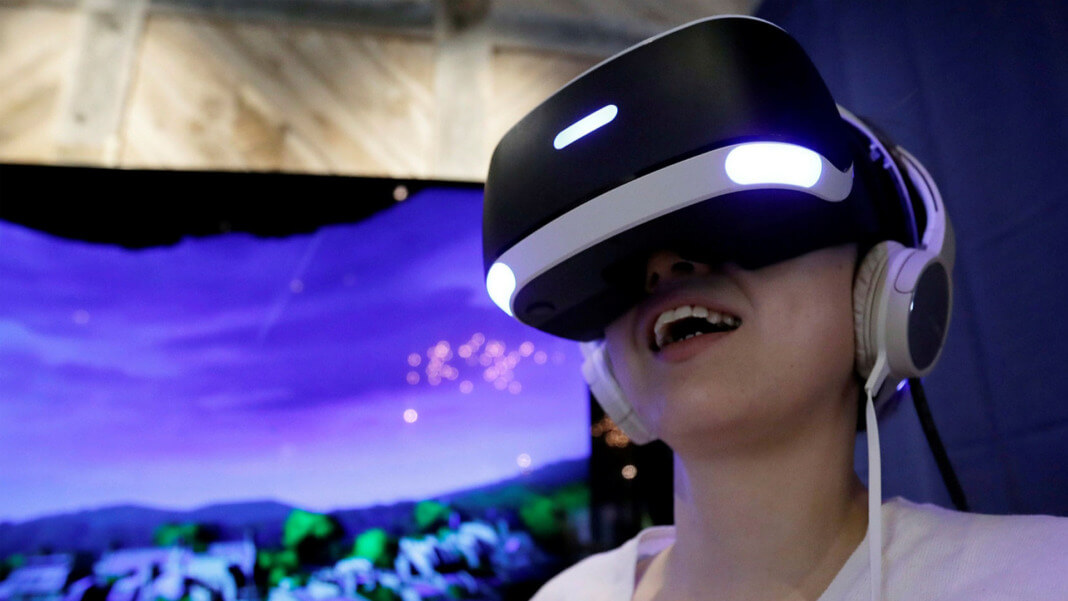Amidst the travel restrictions brought about by the pandemic, a quick scroll through the social media feed would feature countless throwback travel photos from peers. If you’re a person who enjoys a yearly dose of nature and adventure, you will struggle to find a similar alternative to match the level of escapism the Bavarian mountains provide. While teleportation seems farfetched and absurd, you wonder on the possibilities of the dream-inducing model depicted in Inception. A little extreme no doubt, and not to mention, bordering dangerously close to ethical dilemmas. Perhaps the closest technology that can deliver such escapism would be reality technologies like augmented and virtual (AR/VR) reality, which has recently picked up again as a buzz-term of late. In light of social distancing measures and travel restrictions, we explore the potentialities of reality technologies in making a comeback.
The hardware and software problem
AR/VR is not novel. Back in the 1980s, Jaron Lanier made popular the term “virtual reality” when he launched his company VPL Research – one of the pioneering companies of the VR industry. In an interview with NewScientist, Lanier explained that the initial hype behind VR sizzled out due to two issues – hardware and software. Lanier shared that “The hardware problem is solving itself as the costs of components come down naturally” and this is evidently seen in the release of Oculus Quest 2 just recently at a price point of US$299. In comparison, its predecessor, the Oculus Quest was one of few entry-level VR headsets that could operate as a standalone device without the purchase of any other supporting hardware and it costs upwards of US$399. It is reported that the pre-order rate for the Oculus Quest 2 is five times more than the Oculus Quest and it could very well be attributed to the former’s competitive price point.
Although this is a good sign, the current state of VR in terms of providing a holistic sensory experience is still far from the mass-adopted example seen in Holywood interpretations of VR. The cost of haptic technologies remains capital intensive and advancements in the area have not reached the sleek, bodysuit look in “Ready Player One”. What is currently often seen in VR gaming arenas are bulky vests, wired-up controllers and headsets, and a restricted play area.
Despite standalone VR headsets being in the market, it only covers two senses – visual and auditory. To be fully immersive, VR would have to deliver tactile feedback (eg. feeling a virtual punch in a boxing game) which, at the moment, is commonly simulated through controller vibrations. Movements like walking, running, squatting are also being simulated and configured within controller settings. This is because users cannot be exploring open-world areas while physically walking in their living room – they would inevitably walk into a wall in the real world at some point of their virtual exploration.
However, advancement in hardware technology that would closely mimic movement possibilities between real- and virtual- world seems to be picking up. Companies like Virtuix are looking to launch the first omnidirectional treadmill that allows users to walk and run in 360 degrees in video games and virtual worlds. This certainly looks promising, but with reports that initial business- and arcade- versions were planned at a price point of US$1995 does indicate that consumer versions may not be wallet-friendly.
On the software front, Lanier explains that it would take longer to solve as “Virtual worlds have to respond quickly enough for human users, yet need to be shared by multiple people connecting over imperfect networks.” Some of these gaps refer to latency issues which measure the delay or time taken for data to be sent to its destination across a network once the action is activated. Given the importance of speed when surfing the internet, the lower the latency (eg. delay) the better. A high latency will result in a lag, which is disruptive and compromises the users’ experience. As a successful VR experience would require real-time responses, low latency is necessary to deliver a seamless, and immersive experience across multiple users with richer content. To compare, the latency for 4G networks is 50ms on average, and on 5G networks, it is expected to be around 10ms and has the potential to go as low as 1ms.
In Singapore, telco provider Singtel has launched trial 5G services in September 2020 with the Infocomm Media Development Authority announcing a nationwide 5G rollout by 2025. According to a report by Qualcomm, the introduction of 5G networks will boost the adoption and enhancement of AR/VR technologies on several fronts.
Where Augmented Reality (AR) has done better
While the VR-hype is seeing an undulating pattern, AR has probably had better success in mass-adoption given that most mobile phones are AR compatible. Although AR has many applications and use-cases, one of the best examples on how AR has been successful would be Pokemon Go – the perfect blend of how pop-culture meets technology since the Marty McFly’s hoverboard never really took-off.
Other examples of how AR has had more success in mass-adoption is how it has been incorporated in social media platforms. Ask any Gen Z with an Instagram or Tik Tok account, they would most likely have used AR in their social media postings via the use of filters. The AR technology used in filters uses a person’s face as a marker to spawn the desired AR effect. Commercial use-cases of AR have also been exemplary as seen in the IKEA Place and Sephora Visual Artist app. The former allows users to spawn dimension-specific IKEA furniture onto their real-world space to aid with the visualization of how the intended purchase would look like before the actual purchase is made. On the other hand, the Sephora Visual Artist allows users to virtually try on make-up that closely mimics the actual cosmetic product before a purchase is made – this is obviously useful given the virality of COVID19.
It seems that interest in reality technologies has seen a resurgence, and the hype that it has regained could very well be pandemic-driven. Regardless, the introduction of 5G and the lowering of hardware costs would certainly expand the capabilities of reality technologies. However, within the VR scene, the talk of the town at the moment has a particular focus on Facebook’s new policy on Oculus logins and how it is seen as monopolising the VR industry. There is much optimism that reality technologies would live up to its hype in the near future and hopefully, this Facebook hiccup would not put a significant dent in its progress.





